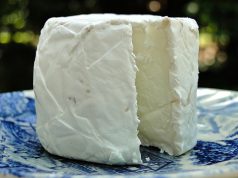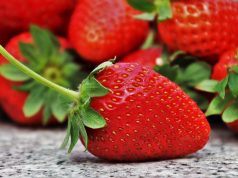Contents
The Art and Science of Cheese Aging
Understanding the Factors that Influence Flavor
Cheese aging is a fascinating process that combines artistry and science to create unique and complex flavors. As cheese ages, it develops a range of flavors and textures that are influenced by a variety of factors.
From the type of milk used to make the cheese to the environment in which it is aged, there are many variables that can impact the final product. Factors such as temperature, humidity, and the presence of specific bacteria all play a role in shaping the flavor profile of aged cheeses.
By understanding the factors that influence cheese aging, producers can create cheeses with distinct flavors and characteristics. Whether you prefer a sharp cheddar or a creamy brie, the art and science of cheese aging offers something for every cheese lover to appreciate.
The Importance of Cheese Aging
Cheese aging is a critical process in the development of flavor and texture in cheese. It is during this time that enzymes break down proteins and fats, creating complex flavors and transforming the cheese into a gourmet product.
The Factors that Influence Flavor
There are several key factors that influence the flavor of aged cheese:
- Type of Milk: The type of milk used to make the cheese, whether it’s cow, goat, or sheep milk, will have a significant impact on the flavor profile.
- Cheese Culture: The specific strains of bacteria and molds used in the cheese-making process will influence the flavor development during aging.
- Ripening Environment: The temperature, humidity, and airflow in the aging room will all affect the aging process and the final flavor of the cheese.
- Aging Time: The duration of aging will determine how intense and complex the flavors become in the cheese.
- Rind Development: The formation of a natural rind or the addition of a surface treatment will also impact the flavor and texture of the cheese.
Understanding the Science Behind Cheese Aging
During the aging process, enzymes break down proteins and fats in the cheese, releasing amino acids and creating new compounds that contribute to flavor. Bacteria and molds also play a crucial role in developing the unique characteristics of aged cheese.
As the cheese ages, moisture evaporates, concentration flavors, and the texture becomes firmer. This process can take anywhere from a few weeks to several years, depending on the type of cheese and the desired flavor profile.
Conclusion
Understanding the art and science of cheese aging is essential for cheese enthusiasts and professionals alike. By considering factors such as milk type, cheese culture, ripening environment, aging time, and rind development, one can appreciate the complexity and diversity of flavors found in aged cheese.
For more information on cheese aging, visit The American Cheese Society.
Frequently Asked Questions
What factors influence the flavor of aged cheese?
There are several factors that influence the flavor of aged cheese, including the type of milk used, the aging process, the temperature and humidity of the aging environment, and the presence of microbes such as bacteria and molds.
How does the type of milk used affect the flavor of aged cheese?
The type of milk used in cheese production can have a significant impact on the flavor of the final product. Different types of milk, such as cow’s milk, goat’s milk, and sheep’s milk, contain different levels of fats, proteins, and sugars that can contribute to the flavor profile of the cheese.
What role do microbes play in the aging process of cheese?
Microbes, such as bacteria and molds, play a crucial role in the aging process of cheese. These microbes help to break down proteins and fats in the cheese, creating complex flavors and textures. The specific strains of microbes present in the aging environment can greatly influence the final flavor of the cheese.
How does the aging process affect the flavor of cheese?
The aging process of cheese is a delicate balance of time, temperature, and humidity. As cheese ages, enzymes within the cheese break down proteins and fats, creating new flavors and textures. The longer cheese is aged, the more complex and intense its flavor will become.
Cheese Aging Process
When it comes to cheese, aging plays a crucial role in developing its flavor profile. During the aging process,
enzymes break down proteins and fats in the cheese, creating new compounds that give cheese its unique taste and
aroma.
Microbial Action
Microorganisms, such as bacteria and fungi, present in the cheese interact with the cheese matrix and release
enzymes that contribute to the aging process. These enzymes break down proteins, fats, and sugars in the cheese,
leading to the formation of complex flavors.
Ripening Conditions
The conditions in which cheese is ripened, such as temperature, humidity, and airflow, also play a significant
role in the aging process. Different cheese varieties require specific ripening conditions to develop their
desired flavors and textures.
For more information on the science behind cheese aging and flavors, you can visit Wikipedia’s Cheese Aging page.
Factors Influencing Cheese Flavor
- Microbial activity
- Temperature and humidity
- Air quality
- Cheese composition








































